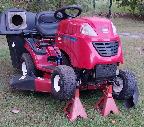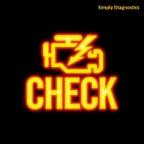*** Restricting New Posts to SD Premium Members ONLY *** (09 May 2025)
Just made a new account? Can't post? Click above.
A place to discuss hardware/software and diagnostic procedures
The ScannerDanner T-Probe (Back Probe)
- YTInnovativeSolution
-
 Topic Author
Topic Author
- Offline
- New Member
-

- Be Innovative
Less
More
- Posts: 14
- Thank you received: 8
9 years 4 months ago #212
by YTInnovativeSolution
The ScannerDanner T-Probe (Back Probe) was created by YTInnovativeSolution
The back probe tool is a must when tinkering around with the electrical system of a car. The wire harness and plugs are built to meet specific standards of quality and reliability. Ever since the days of the Rockford Fosgate Punch-45 audio amp, when the car stereo industry started running strong, so did the sheer number of hacks and butchers who really should have no business working on anyone's car. Companies with big names would 'train' these so-called installers and hand out free t-shirts and other crappy merchandise just for showing up to learn bad practices and techniques. Take a look at the cars with alarm systems and especially those with aftermarket remote start systems. Can you spot a quality install over a crappy one? Take a look at the GM side post battery terminals on the cars with aftermarket amplifiers. Have you seen the protective boots sliced up, if not completely removed from the main battery cables? The bad effects of compromising the integrity of the original wire harness are widespread. From battery charging problems to devastating car fires, there are countless cases where the aftermarket "Installer" is the human error for that complicated electrical problem you just might spend hours on. Sometimes, those hours are lost as the problem has not been identified and fixed. So....
IF you are taking measurements from the electrical harness or the plugs, use a back probe the proper way. Don't go for the Fluke wire piercing probe first just because it's easy, go for your back probes. I noticed Paul using a "T-Probe" in a video, one that looks like a tool originally made for the furniture and upholstery industry. Be careful of the unprotected probe as it's easy to short something out unintentionally.
I made my own back probes. They consist of a thin round wire "Spring Steel" and my probes have a circle at the end instead of a T. I use a variety of objects such as the cap from a BIC ink pen to help insulate my back probes from any accidental contact with chassis ground or other probes in the same area. Additionally, I grind the points of my probes on the bench grinder to give them a very sharp point and defined angle. I can use my probes to EASILY slide down a wire and slip between the wire insulation and the weather proof boot to make contact with the pin - without needing to unplug the connector and most importantly - without compromising the integrity of the wire harness!
My back probes have served many other useful functions too, such as manipulating the retaining locks in the harness plugs to release the single pin needing extraction. Some of them are great for picking locks too. You don't NEED to buy all the tools available on the market. You can easily make some of your own tools and in this case, my own back probes work better than any others I have seen so far. The only cost to me was allocating a small fragment of my memory to grab up on the spring steel garbage and pieces I see along the way. For example, my lock picks and tension tools are mostly made from the steel inserts used in windshield wiper blades, the blades everyone tosses out when new ones are installed. There's some nice spring steel to be found there!!! I use these inserts for making my own wire de-pinning tools too.
So, next time you see someone doing a trailer hitch installation, ask for the spring steel bolt pulling tools included with the kit when they are done. Most hitch installers toss those things out with the trash, never realizing they could be used for other things such as back probes.
IF you are taking measurements from the electrical harness or the plugs, use a back probe the proper way. Don't go for the Fluke wire piercing probe first just because it's easy, go for your back probes. I noticed Paul using a "T-Probe" in a video, one that looks like a tool originally made for the furniture and upholstery industry. Be careful of the unprotected probe as it's easy to short something out unintentionally.
I made my own back probes. They consist of a thin round wire "Spring Steel" and my probes have a circle at the end instead of a T. I use a variety of objects such as the cap from a BIC ink pen to help insulate my back probes from any accidental contact with chassis ground or other probes in the same area. Additionally, I grind the points of my probes on the bench grinder to give them a very sharp point and defined angle. I can use my probes to EASILY slide down a wire and slip between the wire insulation and the weather proof boot to make contact with the pin - without needing to unplug the connector and most importantly - without compromising the integrity of the wire harness!
My back probes have served many other useful functions too, such as manipulating the retaining locks in the harness plugs to release the single pin needing extraction. Some of them are great for picking locks too. You don't NEED to buy all the tools available on the market. You can easily make some of your own tools and in this case, my own back probes work better than any others I have seen so far. The only cost to me was allocating a small fragment of my memory to grab up on the spring steel garbage and pieces I see along the way. For example, my lock picks and tension tools are mostly made from the steel inserts used in windshield wiper blades, the blades everyone tosses out when new ones are installed. There's some nice spring steel to be found there!!! I use these inserts for making my own wire de-pinning tools too.
So, next time you see someone doing a trailer hitch installation, ask for the spring steel bolt pulling tools included with the kit when they are done. Most hitch installers toss those things out with the trash, never realizing they could be used for other things such as back probes.
The following user(s) said Thank You: wyatt, gimmick1, myhilo
Please Log in or Create an account to join the conversation.
- Noah
-

- Offline
- Moderator
-

- Give code definitions with numbers!
Less
More
- Posts: 4947
- Thank you received: 1100
9 years 4 months ago - 9 years 4 months ago #215
by Noah
"Ground cannot be checked with a 10mm socket"
Replied by Noah on topic The ScannerDanner T-Probe (Back Probe)
Pretty smart, I'd like to see a picture of those back probes if you think of it in the future.
There's quite a few videos with Paul using his t-pins, and as you also say, he does quite often warn of accidentally shorting or crossing pins. He also teaches his students to never double t-pin a single connector.
There's certainly some cool tools on the market to temp open our wallets, but I find that the ones made of necessity tend to make it out of my tool box more often.
There's quite a few videos with Paul using his t-pins, and as you also say, he does quite often warn of accidentally shorting or crossing pins. He also teaches his students to never double t-pin a single connector.
There's certainly some cool tools on the market to temp open our wallets, but I find that the ones made of necessity tend to make it out of my tool box more often.
"Ground cannot be checked with a 10mm socket"
Last edit: 9 years 4 months ago by Noah. Reason: poor grammar
Please Log in or Create an account to join the conversation.
- busjockey1..
-

- Offline
- New Member
-

Less
More
- Posts: 17
- Thank you received: 0
9 years 4 months ago #316
by busjockey1..
The Diesel Nerd
Replied by busjockey1.. on topic The ScannerDanner T-Probe (Back Probe)
I'd like to see some pics myself.
The Diesel Nerd
Please Log in or Create an account to join the conversation.
- YTInnovativeSolution
-
 Topic Author
Topic Author
- Offline
- New Member
-

- Be Innovative
Less
More
- Posts: 14
- Thank you received: 8
9 years 4 months ago #605
by YTInnovativeSolution
Replied by YTInnovativeSolution on topic The ScannerDanner T-Probe (Back Probe)
here's a quick pic of my favorite back probe
The following user(s) said Thank You: wyatt, gimmick1, 737tech
Please Log in or Create an account to join the conversation.
- Noah
-

- Offline
- Moderator
-

- Give code definitions with numbers!
Less
More
- Posts: 4947
- Thank you received: 1100
9 years 4 months ago #617
by Noah
"Ground cannot be checked with a 10mm socket"
Replied by Noah on topic The ScannerDanner T-Probe (Back Probe)
Sweet! 
Thanks for sharing.
Thanks for sharing.
"Ground cannot be checked with a 10mm socket"
Please Log in or Create an account to join the conversation.
- YTInnovativeSolution
-
 Topic Author
Topic Author
- Offline
- New Member
-

- Be Innovative
Less
More
- Posts: 14
- Thank you received: 8
9 years 4 months ago #630
by YTInnovativeSolution
Replied by YTInnovativeSolution on topic The ScannerDanner T-Probe (Back Probe)
You are very welcome. I have lots of neat gadgets, tools, and techniques to share and it finally looks like I found the proper forum to post such things. I tried to post a few pics of the back probes a few days ago, but they didn't post for some reason. What is the preferred or maximum image file size for the forum? The preferred image format..?
Thank goodness for YouTube links!
Check out this 4x4 technology....
Thank goodness for YouTube links!
Check out this 4x4 technology....
Please Log in or Create an account to join the conversation.
- Doc
-

- Offline
- Senior Member
-

- Sharing the little I know
Less
More
- Posts: 58
- Thank you received: 12
9 years 4 months ago #781
by Doc
Youtuber specialising in Diagnostic techniques, sharing skills and helping technicians be the best they can be #Picoflu
Replied by Doc on topic The ScannerDanner T-Probe (Back Probe)
I use a variety of back-probes
Pico / AESwave TA008
Snap-on wire probe with loop end and insulating cuff
mac tools probes
various sizes of sewing needles mounted into 4mm banana plugs, also used with female to female 4mm banana then another 4mm male with a split pin in the end to use conventional tektronix / picoMI007 leads for my pico
also use variuos hypodermic needles as they are flexible but very strong - good for very small connectors
HTH
Doc...
Pico / AESwave TA008
Snap-on wire probe with loop end and insulating cuff
mac tools probes
various sizes of sewing needles mounted into 4mm banana plugs, also used with female to female 4mm banana then another 4mm male with a split pin in the end to use conventional tektronix / picoMI007 leads for my pico
also use variuos hypodermic needles as they are flexible but very strong - good for very small connectors
HTH
Doc...
Youtuber specialising in Diagnostic techniques, sharing skills and helping technicians be the best they can be #Picoflu
The following user(s) said Thank You: Jackolope56
Please Log in or Create an account to join the conversation.
Time to create page: 0.279 seconds
